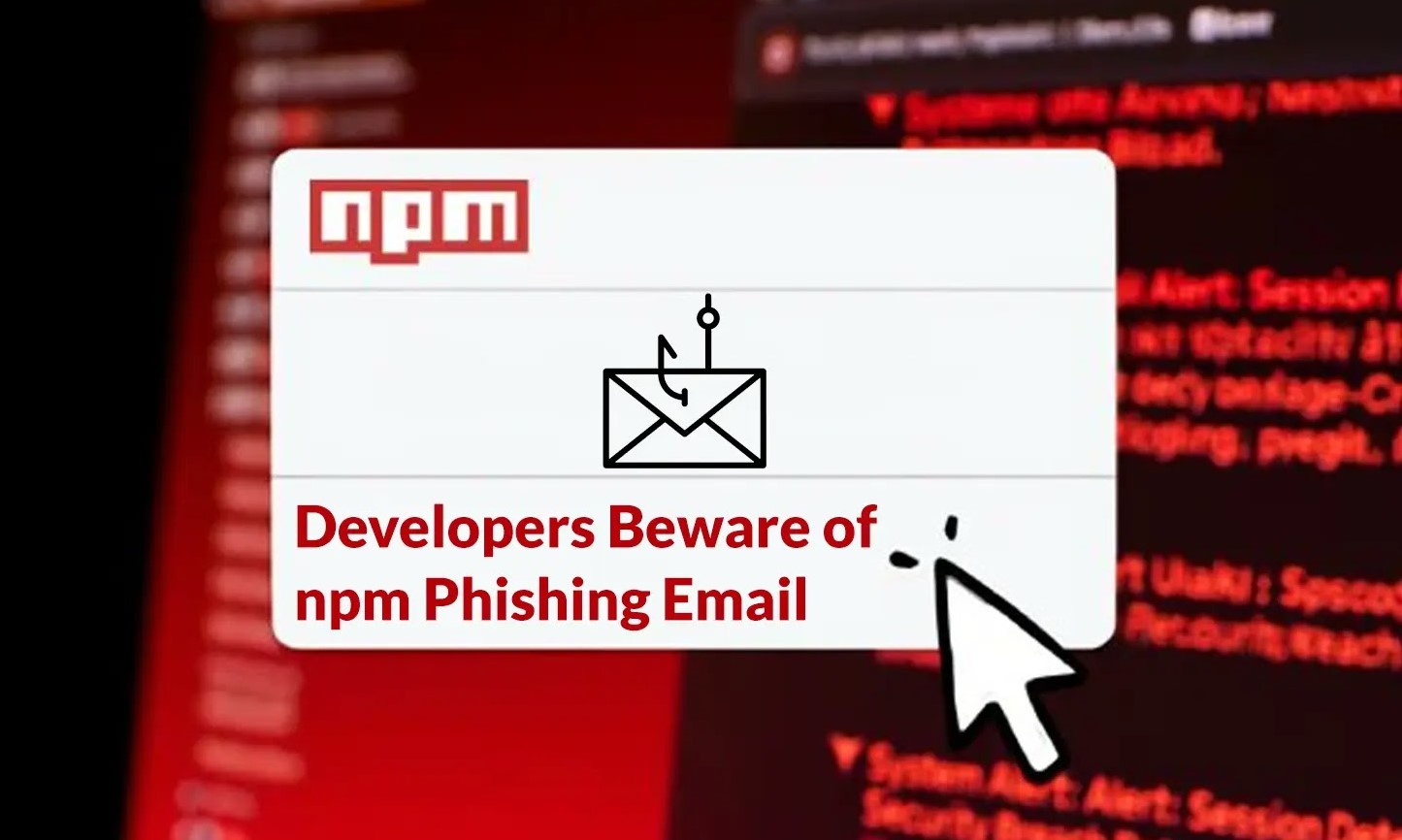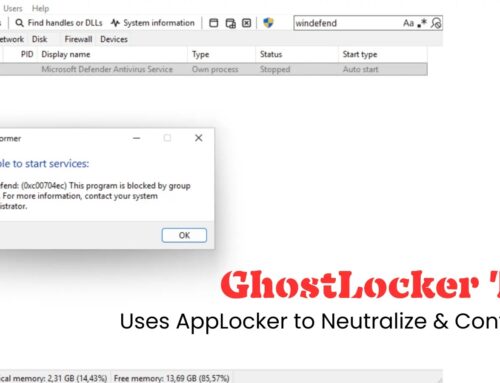
Developers Beware of npm Phishing Email That Steal Your Login Credentials
In the evolving landscape of software development, the integrity of the supply chain is paramount. Node.js developers, who heavily rely on the npm package registry, are now facing a sophisticated phishing threat designed to compromise their credentials. This campaign underscores a critical vulnerability in developer workflows, mimicking trusted platforms to steal sensitive information. Understanding the mechanics of this attack is the first step in fortifying your defenses.
The npm Phishing Impersonation: A Deep Dive
A highly sophisticated phishing campaign has emerged, meticulously targeting Node.js developers. This operation cleverly impersonates the official npm package registry, leveraging a tactic known as typosquatting. The attackers are using the domain npnjs.com, artfully substituting the letter “m” with “n” in the legitimate npmjs.com URL. This subtle alteration creates a near-identical visual replica of the official site, making it incredibly difficult for unsuspecting users to discern the deception.
The attackers’ objective is clear: to trick developers into divulging their npm login credentials. Once these credentials are compromised, malicious actors gain unauthorized access to npm accounts, potentially enabling them to:
- Publish malicious packages under the guise of legitimate authors.
- Inject malicious code into existing popular packages, affecting countless downstream projects.
- Gain access to private repositories or sensitive developer information.
This attack highlights an alarming escalation in supply chain attacks, moving beyond just vulnerabilities within packages to directly targeting the developers who manage them. The ease with which a typosquatted domain can mimic a trusted service presents a significant challenge for even security-conscious individuals.
Understanding Typosquatting and Its Impact
Typosquatting, also known as URL hijacking or a fake URL, relies on common typing errors made by users. In this instance, swapping ‘m’ for ‘n’ might seem trivial, but it’s effective because it exploits visual similarity and rushed attention. When developers click a malicious link from an email or are redirected from a compromised source, they land on a meticulously crafted replica of npmjs.com. This replica is designed to capture login information, often through a seemingly innocuous login form.
The impact of such a campaign extends far beyond individual credential theft. A compromised npm account can lead to:
- Software Supply Chain Compromise: Malicious packages injected into widely used libraries can propagate malware through the entire open-source ecosystem.
- Reputational Damage: For developers or organizations whose accounts are compromised, there’s significant reputational harm, as their trusted packages could be weaponized.
- Data Breaches: Access to developer accounts might provide avenues to internal company networks or sensitive project data.
While this particular phishing campaign does not have a widely recognized CVE associated with it (CVEs typically relate to software vulnerabilities, not social engineering attacks), its impact resonates with broader supply chain security concerns often highlighted by vulnerabilities like those affecting npm packages (e.g., CVE-2022-3866, involving arbitrary file write via npm CLI, though not directly related to this phishing scheme).
Remediation Actions and Best Practices
Protecting yourself and your organization from sophisticated phishing attacks requires a multi-layered approach. Here are critical remediation actions and best practices for developers:
- Verify URLs Meticulously: Before entering any credentials, always double-check the URL in your browser’s address bar. Look for subtle misspellings like “npnjs.com” instead of “npmjs.com.” Manually type known URLs for critical services whenever possible.
- Enable Multi-Factor Authentication (MFA): MFA adds a crucial layer of security. Even if your password is stolen, attackers cannot log in without the second factor (e.g., a code from an authenticator app or a physical security key). npm supports MFA; ensure it’s enabled on your account.
- Be Skeptical of Unsolicited Emails: Treat emails claiming to be from npm—especially those requesting login information or prompting immediate action—with extreme caution. Hover over links to reveal the true destination before clicking.
- Report Suspicious Activity: If you receive a suspicious email or encounter a fake website, report it to npm and your organization’s security team immediately.
- Keep Software Updated: Ensure your operating system, web browser, and developer tools are always up to date. This helps patch known vulnerabilities that attackers might exploit.
- Use a Password Manager: Password managers can help automatically fill in credentials for legitimate sites, reducing the risk of being tricked by lookalike domains. They also help generate strong, unique passwords for each service.
- Educate Yourself and Your Team: Regular security awareness training focused on phishing, social engineering, and supply chain threats is crucial for all developers.
Security Tools for Developers
While the primary defense against phishing is user vigilance, certain tools can augment your security posture:
| Tool Name | Purpose | Link |
|---|---|---|
| Password Managers (e.g., LastPass, 1Password) | Securely store and generate unique passwords, often preventing autofill on fraudulent sites. | lastpass.com / 1password.com |
| Browser Security Extensions (e.g., uBlock Origin, Privacy Badger) | Block malicious scripts, ads, and trackers that might contribute to phishing attempts or expose vulnerabilities. | ublockorigin.com / privacybadger.org |
| Email Security Gateways (Organizational) | Filter out known phishing emails and malicious attachments before they reach inboxes. | (Varies by vendor) |
| Web Application Firewalls (WAFs) | (For developers hosting applications) Protect against common web exploits, including some forms of credential stuffing if API keys are involved. | (Varies by vendor) |
| Security Awareness Training Platforms | Educate employees on recognizing and reporting phishing attempts. | (Varies by vendor) |
Conclusion
The npm phishing campaign targeting Node.js developers underscores the sophisticated nature of modern cyber threats, particularly those leveraging social engineering and supply chain vulnerabilities. As development ecosystems become more interconnected, the attack surface expands, demanding heightened vigilance from individual developers and robust security practices from organizations. By meticulously verifying URLs, enabling MFA, and remaining skeptical of unsolicited communications, developers can significantly reduce their risk of falling victim to such well-crafted impersonation attempts. Staying informed about the latest attack vectors and continuously reinforcing security hygiene are non-negotiable in safeguarding the integrity of the software supply chain.





